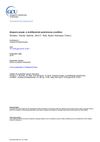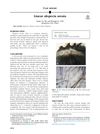Alopecia in the United States: Outpatient Utilization and Common Prescribing Patterns
July 2007
in “
Journal of the American Academy of Dermatology
”
TLDR Alopecia areata causes significant emotional distress, including high rates of depression and anxiety.
The study analyzed data from the National Ambulatory Medical Care Survey (NAMCS) from 1990-2000 to understand the epidemiology and treatment patterns of alopecia areata (AA) in the United States. It found that AA accounted for 25% of all alopecia-related visits, with 88% of these visits being to dermatologists. The highest number of visits were from patients aged 30-59, challenging the notion that AA primarily affects children and adolescents. Triamcinolone preparations were the most frequently used treatment, followed by augmented betamethasone dipropionate and minoxidil. The study highlighted the need for more comprehensive, prospective surveys to better inform research and treatment strategies for AA.

